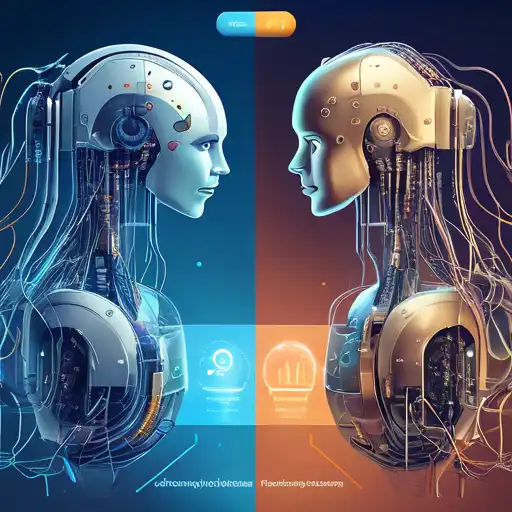Introduction to Machine Learning and Deep Learning
In the realm of artificial intelligence (AI), Machine Learning (ML) and Deep Learning (DL) are two of the most pivotal technologies driving innovation. While they are often used interchangeably, they possess distinct characteristics and applications. This article delves into the key differences between ML and DL, providing clarity for enthusiasts and professionals alike.
What is Machine Learning?
Machine Learning is a subset of AI that enables systems to learn from data, identify patterns, and make decisions with minimal human intervention. ML algorithms are trained using structured data and can improve their accuracy over time. Common applications include spam detection, recommendation systems, and fraud detection.
What is Deep Learning?
Deep Learning, a subset of ML, mimics the workings of the human brain in processing data for decision making. DL uses neural networks with several layers (hence 'deep') to analyze various factors of data. It excels in handling unstructured data like images and speech, powering advancements in facial recognition, autonomous vehicles, and more.
Key Differences Between Machine Learning and Deep Learning
Data Dependency
ML algorithms require structured data and often need manual feature extraction. In contrast, DL algorithms can process unstructured data and automatically extract features, making them more versatile but also more data-hungry.
Hardware Requirements
DL models, due to their complexity and the volume of data they process, demand high-performance hardware like GPUs. ML models can often run on standard CPUs, making them more accessible for smaller-scale projects.
Interpretability
ML models are generally easier to interpret and debug due to their simpler architecture. DL models, with their deep layers, act as a black box, making it challenging to understand how decisions are made.
Use Cases
ML is widely used in applications where interpretability is key, such as in healthcare diagnostics. DL shines in areas requiring the processing of complex data, like natural language processing and computer vision.
Choosing Between Machine Learning and Deep Learning
The choice between ML and DL depends on the specific requirements of your project, including the nature of your data, the computational resources available, and the desired outcome. For projects with limited data or need for transparency, ML might be the way to go. For complex, data-intensive tasks, DL could offer superior performance.
Conclusion
Understanding the differences between Machine Learning and Deep Learning is crucial for leveraging the right technology for your AI projects. While ML offers simplicity and efficiency, DL provides depth and power for handling complex tasks. As AI continues to evolve, the synergy between these technologies will undoubtedly lead to more innovative solutions.
